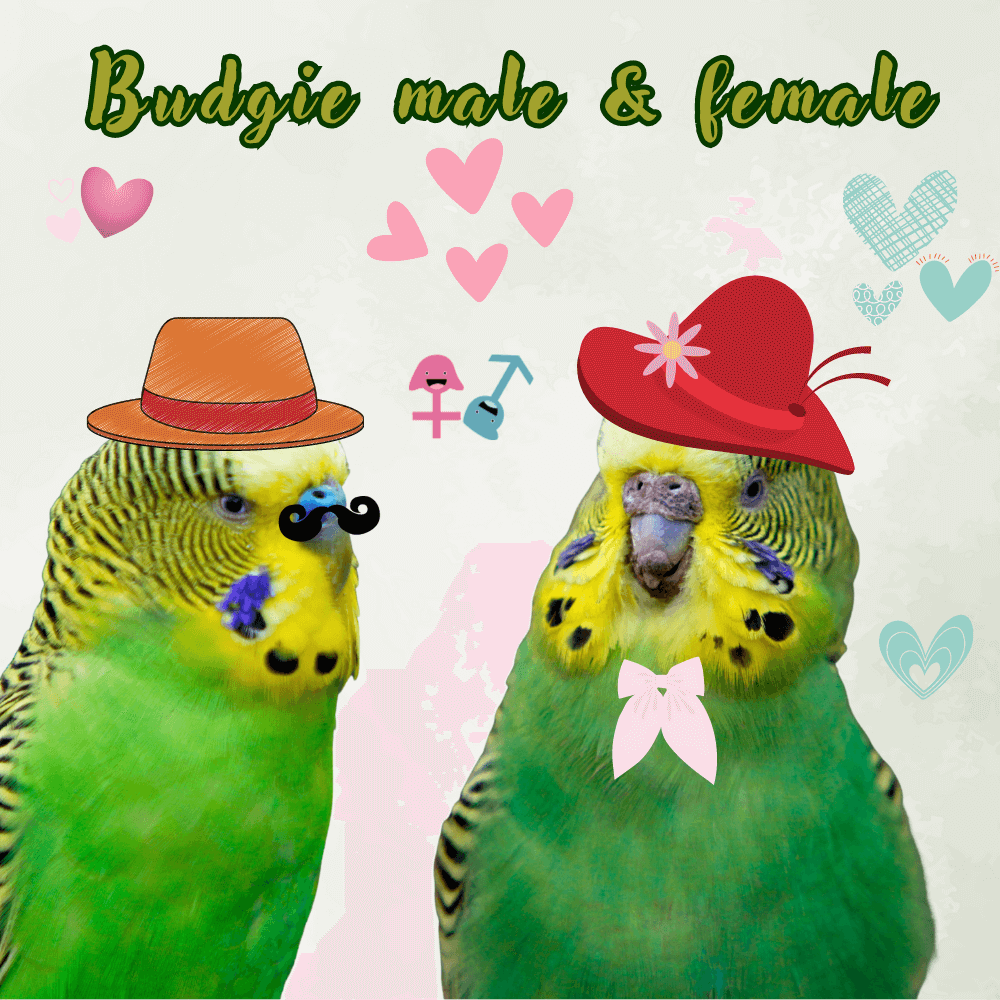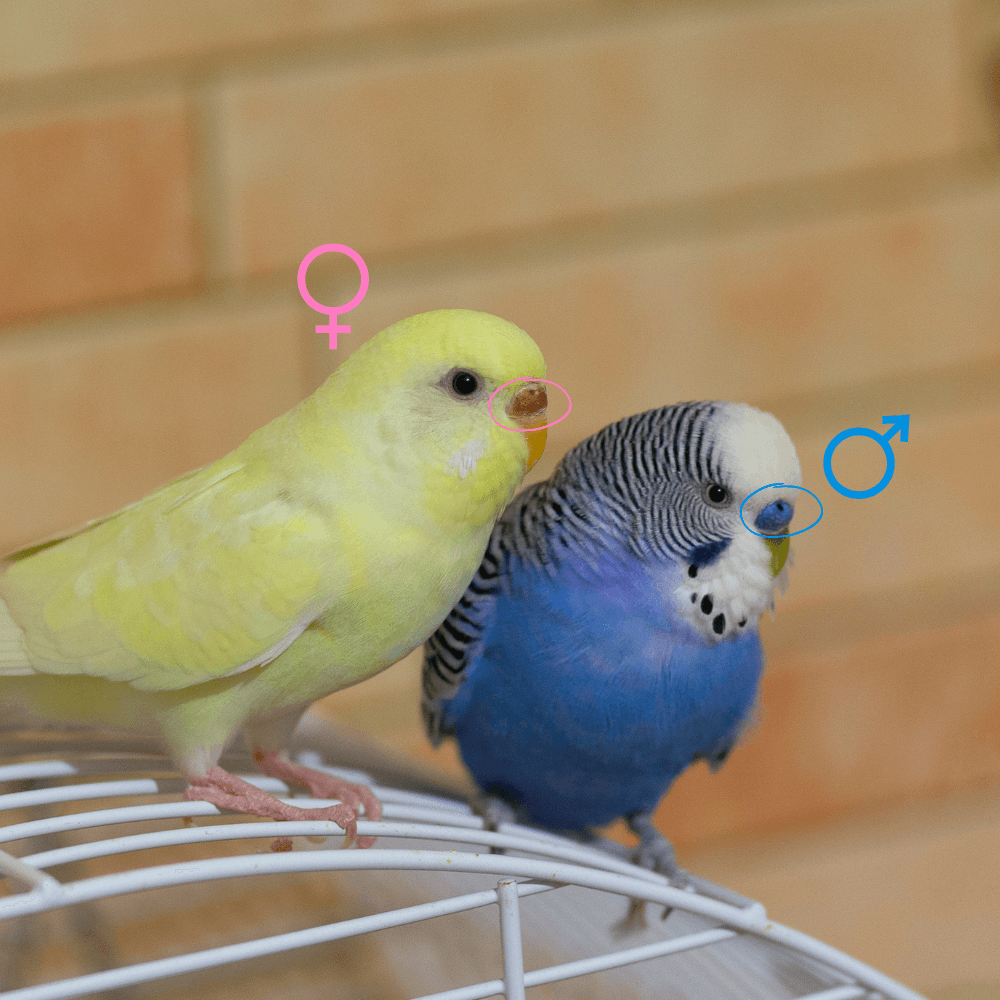
Budgie male and female: If you’re buying a new parrot, you may need to identify its gender (male or female); Learn below which colors distinguish a male from a female parrot, and if you cannot determine the type, remember that you can consult the veterinarian or the breeder from whom you purchased the parrot.
Budgie nose

Find the parrot’s cere
The cere is a covering of skin just above the beak. The parrot’s nostril is located on the cere, making it easier for you to find the cere. Although the parrot’s beak is yellow, the cere varies in color depending on the type of budgie.
- If you identify your parakeet as a male and notice the cere turning brown, it may have a health problem.
Learn how to identify a female parakeet
The female parrot’s cere is usually white or pale brown, but when fertilized and ready to lay eggs, the cere becomes darker tan or pinkish-brown.
- If your parakeet is fertile and ready to breed, you may notice that the cere has become thicker and crustier. At that time, the bitumen was about 1 cm thick
Take the parrot’s age into consideration
If the parrot is younger than 4 months old, it will be difficult to determine the type of parrot by color. Before that time, the colored area from which the type of parrot is distinguished continues to change, making identification of the type of parrot not only difficult but impossible.
If the parrot has not changed its feathers yet and its eyes are black and it has a line between the head and the cere, then it is less than four months old.
- If the parrot is immature or less than four months old, the cere will be pink. The cere will slowly turn violet in the male, remain pink with white circles, and later turn white in the female. If the parrot is between 8 and 12 months old, the cere will be light pink or purple, but it will settle to color when it is a year old.
Understand the difficulties of identifying gender based on color
In addition to changing the color of the cere according to the breeding time, it may change due to other conditions. A female parrot can have a hormonal imbalance, which causes the cere to turn blue for a long time.
Some parrots have a change in the genes, which gives other colors, and in this case the color is not an unreliable indicator in determining the type.
- For example, an albino parrot has a pink cere, which makes it difficult to determine its species.
Determination of the type using other methods

Listen to your parrot
The male parrot is known to make more noise than the female, as it tweets, sings, and sings for a long time. Although the female also makes vocalizations, she makes grumpy vocalizations and is less twittering.
- The male parrot can learn to speak faster.
Watch your parrot’s behavior
The male parrot bobs his head up and down or taps the cage with his beak. He will appear more active, while the female may appear violent if she is breeding or calm if she is not fertilized.
- You may notice that the male leans towards the female and feeds her from his mouth, do not worry, this is normal reproductive behavior.
Ask an expert (DNS test)
When buying a parrot from a seller or breeder, ask him what kind of parrot it is. You can also perform a DNA test to determine the species of parrot.
- Do not forget that you can ask the veterinarian to determine the type of parrot, which is an easy task for the doctor as long as he is familiar with dealing with birds.
If the parrot is tamed, you don’t have to catch it with your hand. Just have it stand on your finger or a stick and check the tar well. The male parrot sometimes has blue on its feet, while the female has pink on its feet.
How to Tell if Your Budgie is a MALE or FEMALE?
SOURCE: Bird Nuggets




















